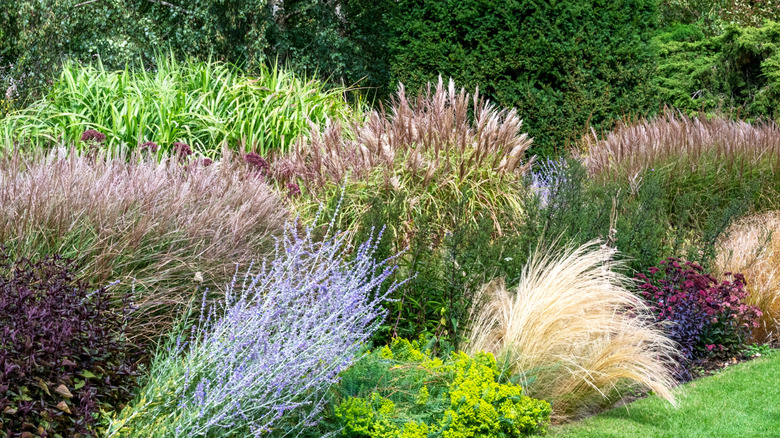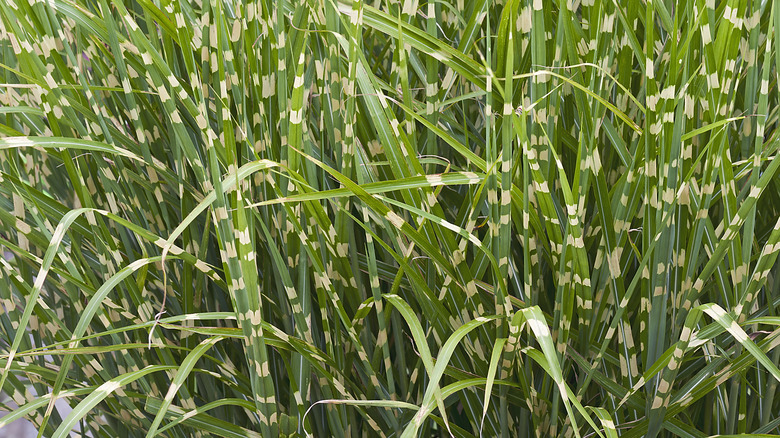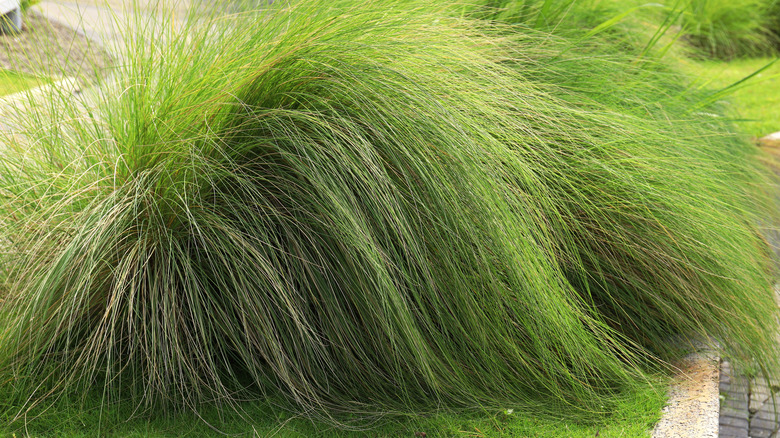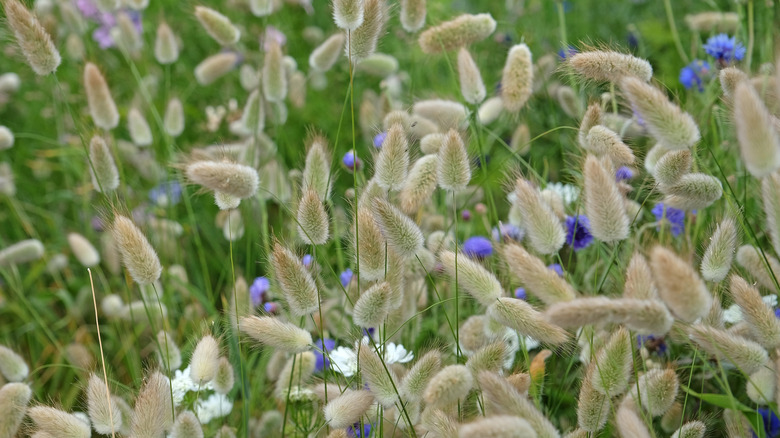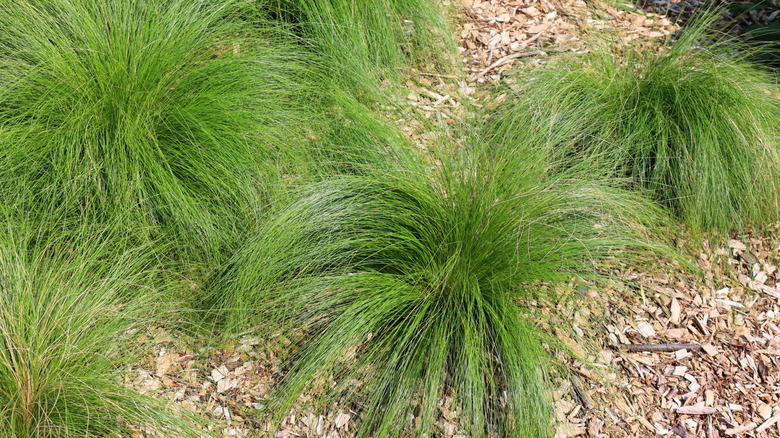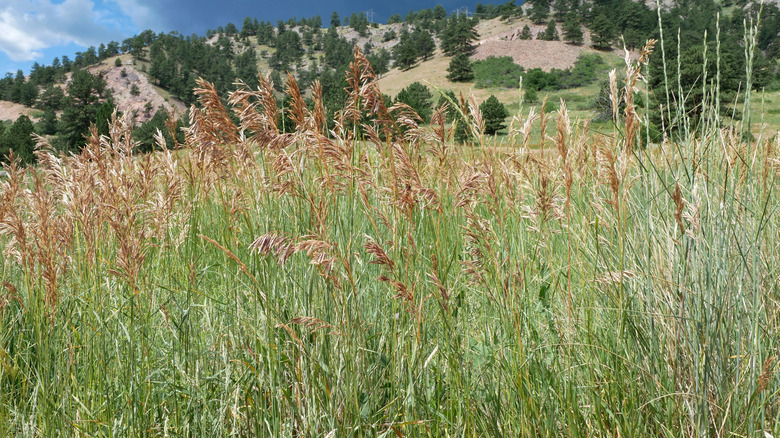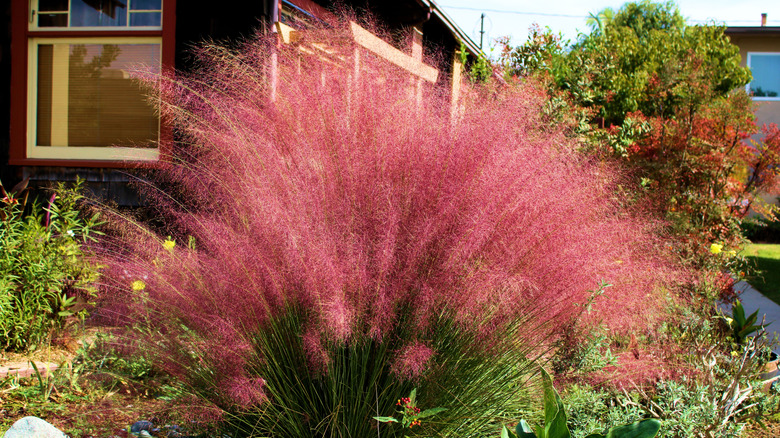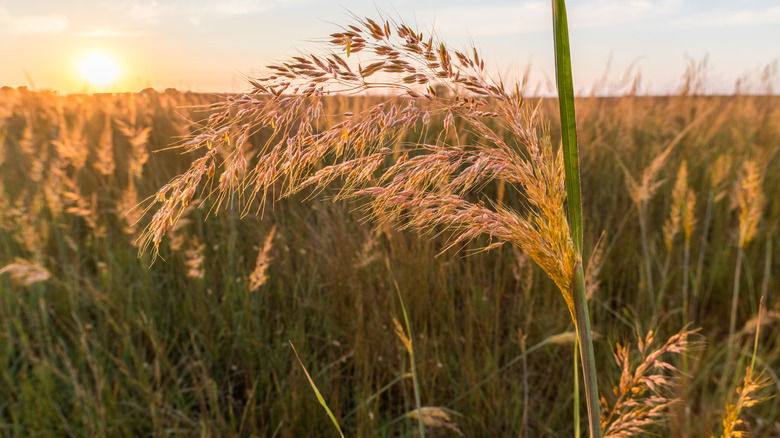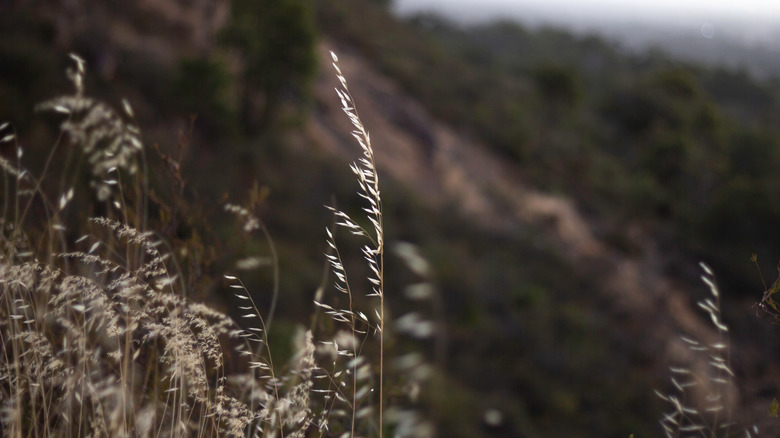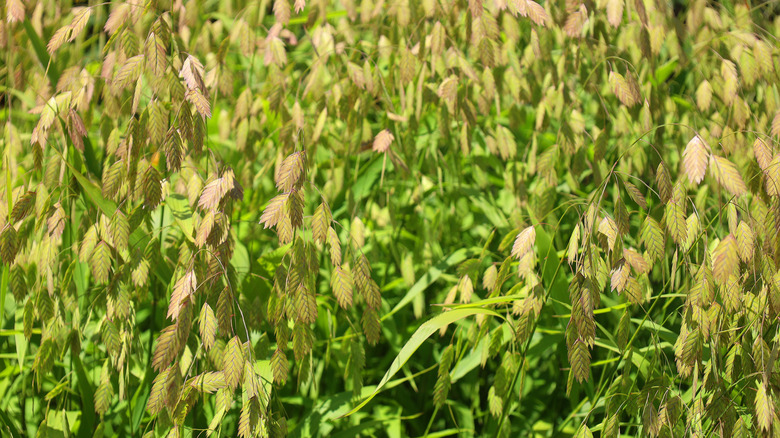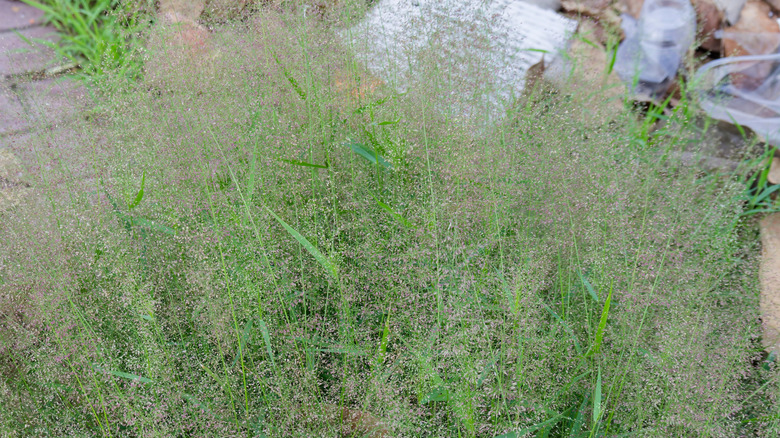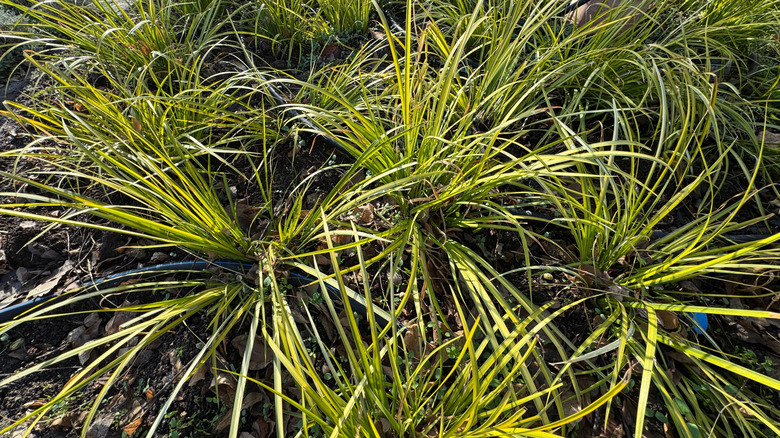11 Ornamental Grasses You Should Be Cutting Back In The Fall
Ornamental grasses are a very popular addition to any front or back yard for added visual interest and beauty. There are many advantages to growing ornamental grasses in your yard and garden, including being easy to maintain, and offering numerous environmental benefits to the birds and other wildlife that visit or live in your yard. While most grasses are low-maintenance, one care task that will keep them in order and looking great is pruning. The best time of year to prune grasses will depend on whether you have planted warm-season grasses or cool-season grasses. Warm season grasses like switch grass, Japanese forest grass, and the others listed below should be cut in the fall, while cool-season grasses like Elijah blue fescue, or Mexican feather grass do better with waiting until early spring.
Ornamental grasses have a variety of uses. Grasses like Indian grass or Big bluestem can double as stylish natural privacy screens. Grasses are also used for erosion control, as backdrops for shorter flowers, and look great when paired with a variety of plants like petunias, sedum, or phlox. You can even build a gorgeous windbreak with grasses that protects some of your more fragile plants. Most ornamental grasses, especially those that are fall bloomers, are perennials, but there are annual grasses if you prefer. As long as they have the right growing conditions and you prune them at the right time of year for the type of season they are (warm or cool), you will be able to enjoy your ornamental grasses for years to come.
Zebra Grass
Zebra Grass (Miscanthus sinensis 'Zebrinus') is a unique perennial ornamental grass with dark green foliage that features bands of yellow horizontally across the blades. If you want something unique and colorful for your garden, this will fit the bill. Zebra grass is hardy in zones 5 to 9. Prune your zebra grass in the fall, removing any dead or diseased foliage. If you live in an area prone to forest fires, be sure to remove any dried stems. Cut them back to just a few inches above the crown.
Deer grass
Deer grass (Muhlenbergia rigens) is a non-invasive, warm-season perennial hardy in zones 7 to 10. Despite its name, deer grass isn't usually eaten by deer but it is a favorite of rabbits, squirrels, and other small mammals. Deer grass doesn't need much in the way of pruning. You can use a rake to pull out the dead stems and stalks every so often and then every 1 to 3 years, cut it down to at least 3 inches from ground level.
Bunny tail grass
Not all ornamental grasses are perennials, some are annuals like bunny tail grass (Lagurus ovatus). This adorable grass features flowers that are ivory or white and are super soft. The cut stems with their fuzzy blooms look great in vases. Bunny tail grass does the best in zones 8 to 11 but can be grown anywhere. This ornamental grass is a warm-season grass and should be cut to the ground in fall to prevent self-seeding where you may not want there to be grasses.
Prairie dropseed
Prairie dropseed (Sporobolus heterolepis) is a wispy ornamental grass with thin blades that grow up and flop over just like a fountain. Prairie dropseed is hardy in zones 3 to 9 and tolerates a large variety of soil types from rocky to clay and sandy. Prune prairie dropseed in the late fall after blooming to get the plant ready for new growth in the spring. Keep in mind that pruning in the fall will remove a food source for birds. During the growing season, no pruning is necessary.
Big Bluestem
Big Bluestem (Andropogon gerardii) is a warm-season, perennial ornamental grass hardy in zones 3 to 9 that is non-invasive. Big bluestem is used for landscape conservation and is a great forage for horses, cattle, and wildlife. When pruning big bluestem, cut it back to about 4 inches tall in late fall unless you want to leave the grasses over the winter for the birds to enjoy. In that case, you can wait until late winter or early spring.
Pink muhly grass
If you're looking for an ornamental grass to add attractive color to your landscaping, pink muhly grass (Muhlenbergia capillaris) is it. This lovely grass produces stunning bright pink, feather-like fronds that will definitely draw attention from anyone who sees it. Pink muhly is hardy in zones 5 to 9 and makes a great shelter and habitat for birds and other wildlife. Prune your pink muhly grass in late fall after blooming, and cut it down to about 3 to 6 inches from ground level.
Indian grass
Indian grass (Sorghastrum nutans) is an impressive, non-invasive ornamental grass hardy in zones 4 to 9 that is a favorite of game and songbirds and other wildlife like deer, butterflies, and bees. Indian grass is an ornamental grass that doesn't require much pruning and offers food to birds throughout the winter if you leave some seed heads unpruned. Some gardeners choose to wait until late winter or early spring because of erosion control in winter. When you do prune Indian grass, cut it to about 4 inches from ground level.
Sideoats grama
Sideoats grama (Bouteloua curtipendula) is a warm-season perennial hardy in zones 4 to 9. Saving the seeds from sideoats grama is very simple and can be done in early fall once the stalks and seeds turn brown. Using your hand, strip the seeds right off the stalk and you'll have a handful of side oats grama seeds you can plant anywhere you choose. Once you have the seeds you want, you can trim back your sideoats to 3 to 4 inches above ground cutting straight across or unevenly for a more natural look.
Northern sea oats
Northern sea oats (Chasmanthium latifolium) is an upright perennial grass with a spread of 1 to 2 feet that grows somewhere between 2 and 5 feet tall. Northern sea oats are hardy in zones 3 to 8. Pruning needs to be in fall to avoid the plant dropping its seeds — which will then sprout even where you don't want them. Cut down to just above the ground or ground level. The cut stems can make a great dried arrangement, perfect for fall decorating.
Purple lovegrass
Purple lovegrass (Eragrostis spectabilis) is a warm-season perennial grass native to central and eastern North America. Purple lovegrass is hardy in zones 5 to 10 and goes dormant in the winter. These pretty grasses attract birds and small animals and is used as a food source and shelter especially during the winter. Prune purple lovegrass by cutting it back to 3 or 4 inches above the soil. You can even go over them with the mower in fall or winter and they will come back good as new in the spring.
Golden Variegated Sweet Flag
Golden variegated sweet flag (Acorus gramineus 'Ogon') is a warm-season perennial hardy in zones 5 to 9. Golden variegated sweet flag can be used as a border or grown in pots, and thrives beautifully in wet soil around ponds and even in boggy areas. Pruning is typically not needed for golden variegated sweet flag because it is evergreen, but if it's looking a little ragged, you can cut it back in the fall and it will grow back again good as new.
